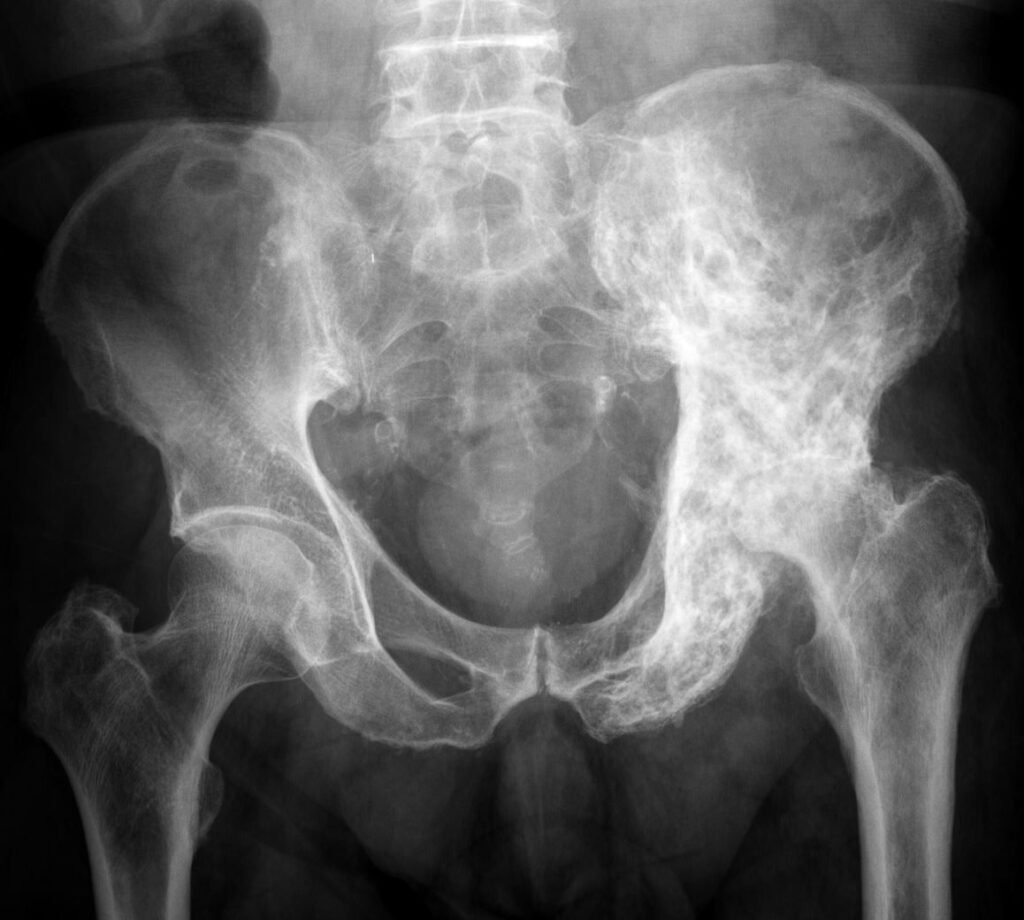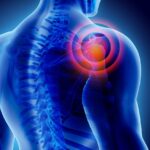Paget’s disease of bone, also known as osteitis deformans, is a chronic skeletal disorder characterized by abnormal bone remodeling. This condition leads to the excessive breakdown and formation of bone, resulting in enlarged, misshapen, and structurally weaker bones. Commonly affecting the pelvis, skull, spine, and legs, the disease typically manifests in older adults and may be asymptomatic in its early stages.

Pathophysiology of Bone Remodeling in Paget’s Disease
Under normal conditions, bone undergoes continuous remodeling through a balance between osteoclastic bone resorption and osteoblastic bone formation. In Paget’s disease, this balance is disrupted. Osteoclasts become hyperactive, leading to rapid resorption, followed by a compensatory increase in osteoblastic activity, which produces disorganized and structurally inferior bone.
Causes and Risk Factors
While the precise etiology remains unclear, the following factors are associated with Paget’s disease:
- Genetic predisposition: Mutations in the SQSTM1 gene have been linked to familial forms.
- Environmental influences: Viral infections, particularly paramyxoviruses, have been proposed but not confirmed.
- Age and geography: Incidence increases with age and is more prevalent in Europe, North America, and Australia.
- Sex: Males are slightly more affected than females.
Clinical Manifestations
Paget’s disease can range from asymptomatic to severely disabling, depending on the extent and location of bone involvement.
Common Symptoms
- Bone pain: The most frequent symptom, often localized to the affected site.
- Skeletal deformities: Bowing of limbs, enlargement of the skull, or curvature of the spine.
- Fractures: Brittle bones increase the risk of breaks.
- Neurological symptoms: Hearing loss due to skull involvement or spinal compression from vertebral changes.
Less Frequent Complications
- Osteoarthritis: Due to stress on adjacent joints.
- Cardiovascular issues: High-output cardiac failure in severe cases.
- Malignant transformation: Rarely, Paget’s may evolve into osteosarcoma.
Diagnostic Approach
Diagnosis often begins with radiological and biochemical assessments due to the non-specific nature of symptoms.
Laboratory Tests
- Serum alkaline phosphatase (ALP): Typically elevated in active disease.
- Normal calcium and phosphate levels: Unlike other metabolic bone diseases.
- Bone turnover markers: Such as serum PINP and urinary NTX.
Imaging Studies
- X-rays: Reveal characteristic lytic and sclerotic lesions, bone enlargement, and deformities.
- Bone scintigraphy (bone scan): Highly sensitive in detecting multiple affected sites.
- CT/MRI: Useful in assessing complications such as nerve compression or tumor formation.
Treatment Modalities
Pharmacological Interventions
Bisphosphonates
These are the mainstay of therapy, working to inhibit osteoclast-mediated bone resorption.
- Zoledronic acid: First-line agent due to its potency and long duration.
- Risedronate, alendronate, pamidronate: Alternatives based on patient tolerance and availability.
Calcitonin
Used less frequently, mainly for patients intolerant to bisphosphonates or during acute bone pain episodes.
Supportive Measures
- Analgesics and NSAIDs: For pain control.
- Physical therapy: Improves mobility and prevents contractures.
- Orthopedic intervention: Required for fracture repair or corrective osteotomies.
Prognosis and Monitoring
The majority of patients respond well to bisphosphonates, with biochemical and symptomatic improvements. Periodic monitoring of serum ALP and bone scans is advised to assess disease activity and guide retreatment.
Preventive Measures and Lifestyle Considerations
While no preventive strategy exists for genetic forms, the following steps may support bone health:
- Adequate calcium and vitamin D intake
- Regular low-impact exercise
- Fall prevention in older adults
- Routine monitoring in high-risk individuals with family history
Research and Future Directions
Current studies are investigating the role of newer anti-resorptive agents such as denosumab, the molecular mechanisms behind osteoclast hyperactivity, and the potential viral etiologies. Genetic screening and targeted therapies may hold promise for early detection and personalized treatment strategies.
Frequently Asked Questions
What is Paget’s disease of bone?
A chronic disorder leading to abnormal bone remodeling, causing enlarged and weak bones.
Who is at risk of developing Paget’s disease?
Typically individuals over 50, especially with a family history or European ancestry.
Is Paget’s disease curable?
There is no cure, but symptoms can be managed effectively with medication and supportive care.
How is Paget’s disease diagnosed?
Through elevated ALP levels and imaging such as X-rays or bone scans.
Can Paget’s disease lead to cancer?
Yes, but rarely. In less than 1% of cases, it may progress to osteosarcoma.
What is the best treatment for Paget’s disease?
Zoledronic acid is considered the most effective treatment for active disease.

